Dear Artist,
In 1872, businessman, racehorse enthusiast and former governor of California, Leland Stanford, commissioned photographer Eadweard Muybridge to prove a theory about a horse’s gait. Until then, equine painters, including Western painters, had been depicting horses at a trot with one foot on the ground and in a gallop with all four legs sticking out — like a hobbyhorse. Muybridge set up 12 cameras and photographed Standford’s own Standardbred trotter, Occident, trotting. Amongst the 12 frames was a single, groundbreaking photographic negative showing Occident with all four feet off the ground.
For the gallop, Muybridge designed his study, “Sallie Gardner at a Gallop.” Also known as “The Horse in Motion,” Muybridge placed large, glass-plate cameras in a line along the edge of Stanford’s Palo Alto Stock Farm racetrack (now Stanford University.) He laid a thread on the track — enabling Sallie to trigger the shutter of each camera as she passed — and lined the track with light-reflecting cotton sheets for a good exposure. He copied the resulting images onto discs that could be viewed in quick sequence through a machine he made, called a “zoopraxiscope.” He didn’t know he’d built an early movie projector.
As for Sallie Gardner, she did, in fact, prove the theory of “unsupported transit” while galloping — just not when her legs were extended to the front and back, hobbyhorse-style, as previously imagined. Instead, it was when her feet were tucked beneath her, before pushing off the ground with her hind legs and pulling forward with her front, that Sallie took off.
Sincerely,
Sara
PS: “Only photography has been able to divide human life into a series of moments; each of them has the value of a complete existence.” (Eadweard Muybridge)
Esoterica: Thanks to the camera, American Impressionist Frederic Remington was one of the first American artists to paint a horse’s true gait in motion. Soldiers, cowboys, ranchers, Native Americans and their horses became Remington’s signature subjects — his mastery peaking when he exaggerated the action originally sourced from photo reference. Though criticized by some for using photography, Remington’s depictions of a disappearing American West, with heightened drama and anatomical accuracy earned him acclaim as an illustrator, painter and sculptor. “The artist,” he said, “must know more than the camera.”
“I knew the railroad was coming — I saw men already swarming into the land. I knew the derby hat, the smoking chimneys, the cord binder, and the 30-day note were upon us in a restless surge. I knew the wild riders and the vacant land were about to vanish forever… and the more I considered the subject, the bigger the forever loomed. Without knowing how to do it, I began to record some facts around me, and the more I looked the more the panorama unfolded.” (Frederic Remington)
The group exhibition “The Intercepting Nature of Colour + Form” is on view at Gallery Jones, 1-258 East 1st Avenue, Vancouver, BC until February 22nd, 2020.
The Letters: Vol. 1 and 2, narrated by Dave Genn, are available for download on Amazon, here. Proceeds of sales contribute to the production of The Painter’s Keys.
“He is, of course, one of the most typical American artists we have ever had, and he has portrayed a most characteristic and yet vanishing type of American life. The soldier, the cowboy and rancher, the Indian, the horses and the cattle of the plains, will live in his pictures and bronzes, I verily believe, for all time.” (Theodore Roosevelt on Frederic Remington)
Featured Workshop
Experience beautiful early spring in Santa Fe, NM. Develop your own unique marks and painting vocabulary in this 2 1/2 day abstract acrylic workshop.
We will work on paper, and for those who like, unstretched canvas, using conventional and unconventional mark making tools and drawing media. Via guided exercises you will practice a variety of marks and learn how to create a work rich with history and depth through the process of layering these marks with acrylic paint.
This class is suitable for beginning and intermediate painters. Cost is $595.00 Materials list provided one month prior to the workshop or can be provided at an additional cost of $100.00
https://julieschumer.com/julie-schumer-workshops/
Featured Artist
Painting is my passion and joy. My process is intuitive, though informed by good composition and design principles. I paint what I remember, or think about, or feel, or just what comes off my hands to the brush to the canvas. Texture and color are of primary importance to me. I typically choose my support, texture it, select my palette, and go. There is nothing more satisfying to me than watching paint run and move. I love the surprises. I experiment and learn constantly. It is a remarkable journey. One I am pleased to share with you.

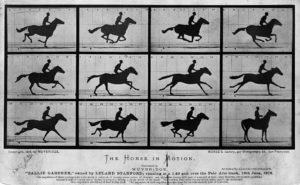
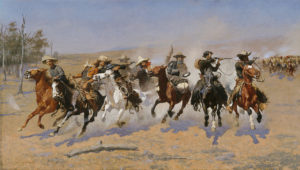
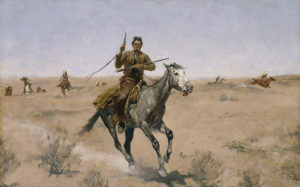
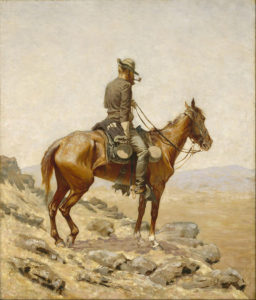
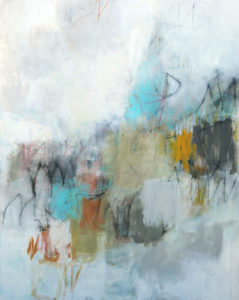
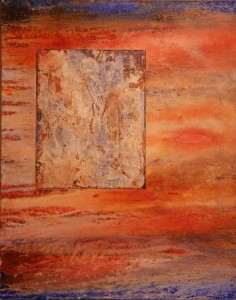



12 Comments
This was an interesting article. I am from the Thousand Island area of New York State on the Canadian border. Remington was from Ogdensburg and maintained a studio on one of the islands. Artists leave surprising footprints in the landscape sometimes. I was walking one day down a road that ran parallel to the river. Something I saw pulled me off the road into a wooded area. Imagine my surprise when I spotted an Indian on a pony positioned to go down a small escarpment. It was an almost life size Remington sculpture there in the woods. The property was owned by a painter and contemporary of Remmington’s. I thought you might enjoy this snippet of an adventure.
What a happy story- thanks for sharing it!
❤️❤️❤️
I love the idea of happening upon this piece in the midst of nowhere, for all practical purposes. It’s not unlike discovering the reclining Buddha in Phraya Nakhon Cave, hidden in the Thailand jungle. It is there for eternity and speaks to eternity whether there be witnesses or not.
Nice!
To those us who appreciate the western genre [and despite some effete pundits the genre does produce some very fine art], the pioneers are Remington and Charley Russell. I was familiar with Muybridge’s groundbreaking photos but didn’t realize they were available to Remington. I just thought he had a good eye. He has always been my favourite of the two.
Oh, I forgot to add, his stay at Lake Ohara resulted in one of the finest paintings ever done of that storied place. All he could say about it afterwards, however was how annoying the noise of the waterfall was.
I wrote a book (on Amazon( called Travelling ti Artistica -4 one man one act plays on artist who had a reverence for the outdoors: RE: Winslow Homer, Fredrick Church, John James Audubon and FREDRICK REMINGTON -short condensed stories that inspired me to eventually paint landscapes. With your Muybridge Horse Gaits I may or Muy a horse painting -see INSPIRATION all over again THank you for the article .
Horses have always fascinated me. Having never had much to do with them I found this article delightful. I loved the quote “The artist must know more than the camera”. Indeed. I tell my students not to be a slave to the photograph when they use one.
Sara:
On a trip to Milwaukee and on to Chicago some years ago, we made a visit to the Art Institute.
There I was fortunate to see two Frederick Remingtons that depicted some bits of Western life
in the 1800s. Unfortunately (maybe) the palette for both was black and white and all of the
in betweens. which could have been painted in local color.
Nevertheless, the technique was solid and sure and a treat for my eyes.
Having grownup in Kansas I was exposed to the goings on of cowboys. My grandfather was a blacksmith so not on;y were they friends they family members in some cases. They farmed, ran cattle and enjoyed the struggle for 6 days a week and on the seventh, after church, they did a small rodeo. They rode horses, roped laughed and carried on and were a wonderful example of contentment. They loved what they did. They loved God and family. Many years later I looked up the founding members of the Cowboys of America and realized I knew these guys.
Growing up in the 50’s, cowboys, horses, six-shooters, and the whole feel of being a cowboy was something we often imagined while playing in the woods in northern NJ (before the woods became houses and malls), but without realizing it, I think we were really celebrating the freedom and connection to being outdoors that Remington captured so well in his western paintings. Everything else was an outfit.